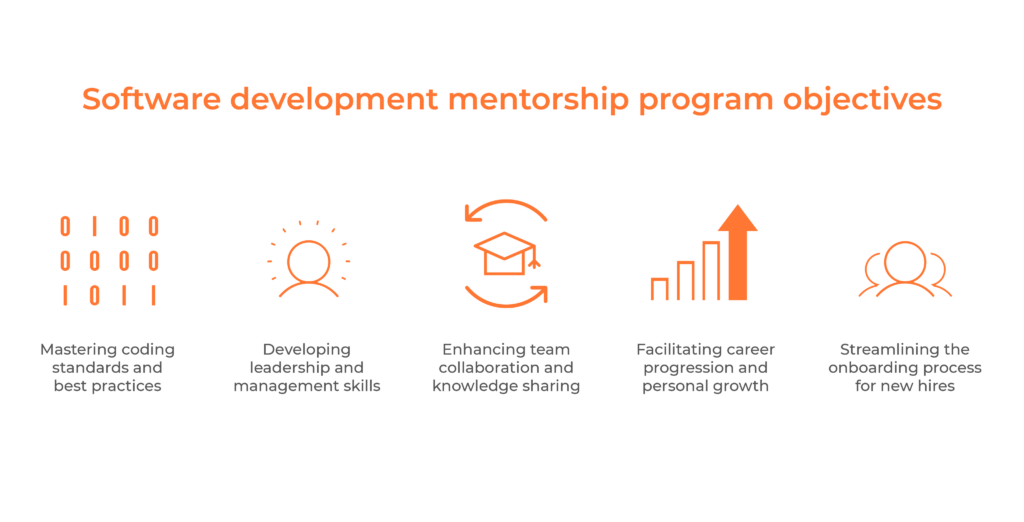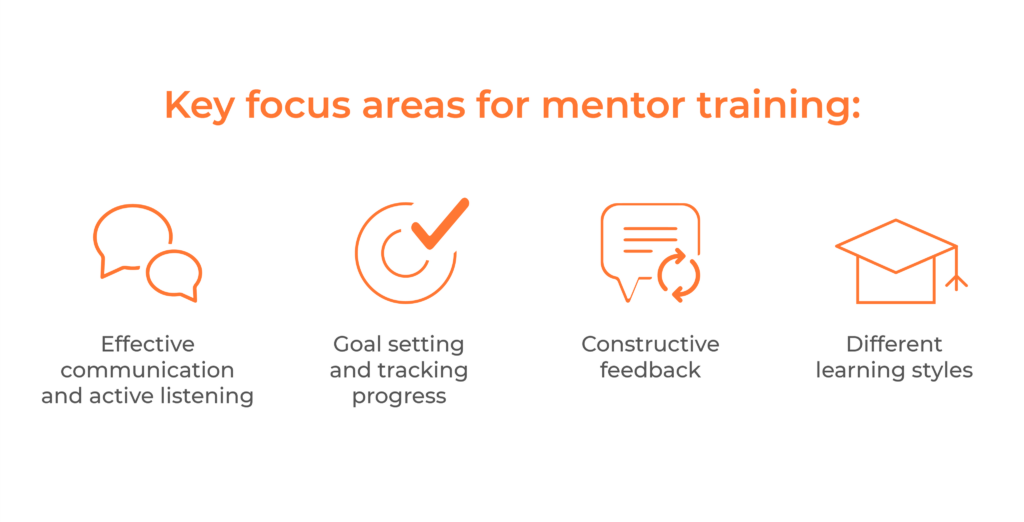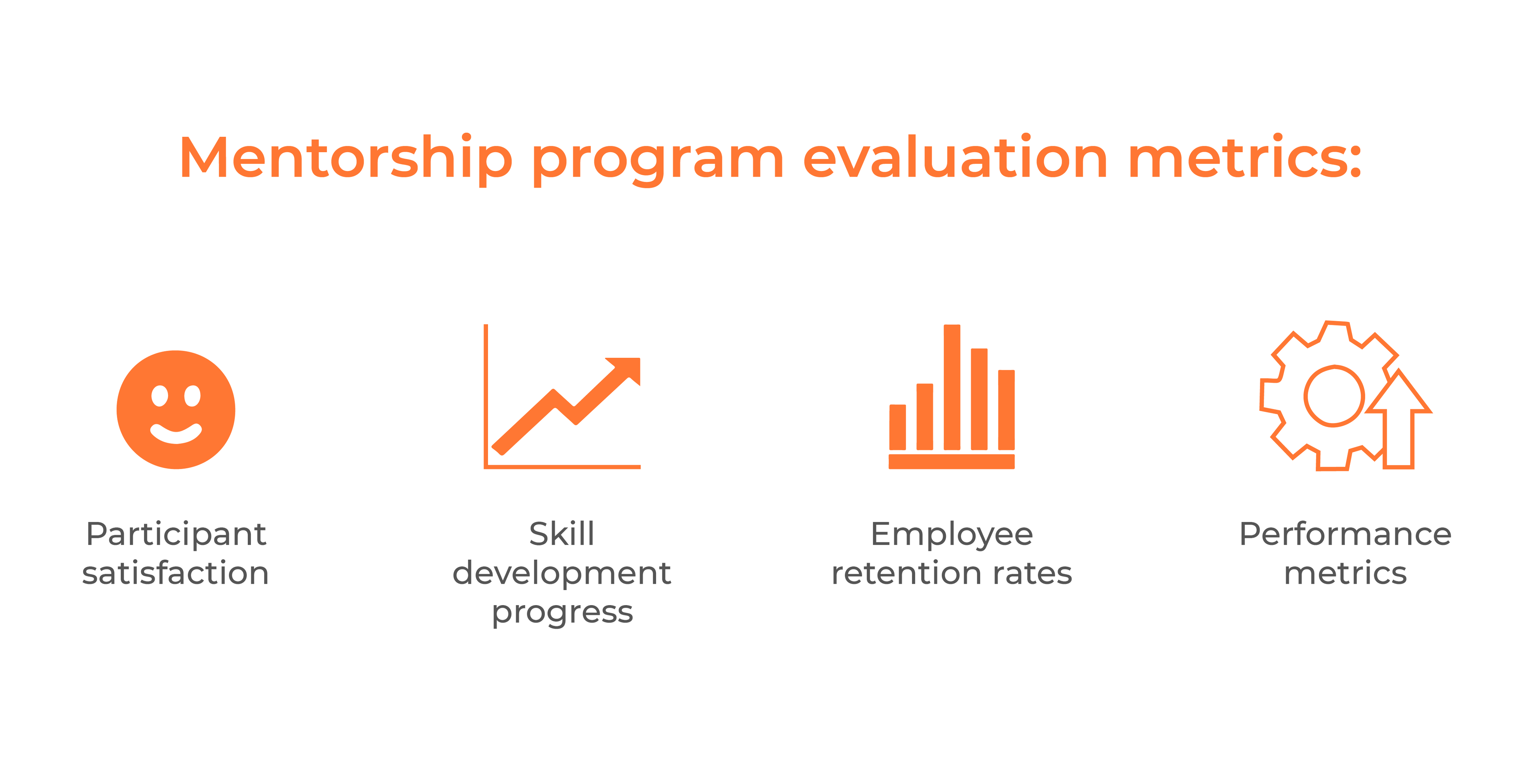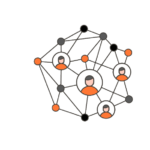
How to Create an Effective Mentorship Program for Your Software Development Team
Kristijan Pušić | June 19th, 2024
Having an effective mentorship program is the key to unlocking your team’s full potential. No more, no less. Not only does a well-structured mentorship program help grow technical skills, but it also fosters leadership, collaboration, and continuous growth.
In this article, I will explain how to make an effective mentorship program tailored for your software development team.
1. Define clear objectives
The first step in setting up a successful mentorship program is to establish clear and measurable objectives. These objectives will guide the structure and focus of your program, ensuring that both mentors and mentees are aligned with the desired outcomes.
You need to ensure that these objectives are in harmony with broader business goals, creating a synergy between individual growth and organizational success.
Here are some examples:

By defining these objectives, you create a comprehensive roadmap that not only measures the program’s success but also keeps all participants focused and engaged. This approach allows for the integration of specific performance tracking tools, which can significantly expedite the process of monitoring and evaluating progress.
2. Design the mentorship program structure
The foundation of a successful mentorship program lies in its structural design. This includes determining the duration, frequency of meetings, and setting expectations for both mentors and mentees.
Key structural elements to consider:
- Duration: Aim for a program length of 6 to 12 months, allowing sufficient time for meaningful progress and skill development.
- Meeting frequency: Schedule regular sessions (weekly or bi-weekly) to maintain consistent engagement and momentum.
- Goal setting: Establish specific, measurable, and time-bound objectives for mentees to achieve during the program.
- Documentation: Implement standardized templates for meeting agendas and progress tracking to enhance focus and productivity.
3. Match mentor-mentee pairs
While other aspects of the mentorship program may have room for adjustment, a strong mentor-mentee relationship can overcome potential challenges and drive success.
Remember the four types of mentors – advisors, sponsors, coaches, and connectors – each bring unique value to the mentorship dynamic. Carefully consider which type best suits each mentee’s needs and goals.
Using JobEQ surveys can also facilitate this process and help in making informed pairing decisions. These tests show various aspects of a professional profile, including cognitive preferences, motivational drivers, work style tendencies, and communication patterns.
Key factors to consider in the matching process:
- JobEQ assessment results: Use the evaluations to gain insights into personality traits, work styles, and potential areas of synergy between mentors and mentees.
- Technical proficiency and experience: Align mentors’ expertise with mentees’ developmental needs and career trajectories.
- Career aspirations: Ensure mentors can provide relevant guidance aligned with mentees’ professional goals and interests.
- Personal attributes: Consider complementary personality traits and working styles to foster productive relationships.
4. Provide training and resources
To maximize the impact of your mentorship program, prioritize the development of your mentors. A well-designed training curriculum serves as the cornerstone for building mentor competency, focusing on critical skills that drive successful mentorship relationships.
There are a lot of AI assistants that can help and suggest extra materials for the topics needed in the mentorship program. Topics repeat from time to time, and it adds extra quality in the future mentorship sessions.

This training helps mentors to better support their mentees and explain in reality a culture of continuous improvement.
5. Set expectations and guidelines
To make your mentorship program work well, it’s important to set clear rules. These rules help both mentors and mentees understand their roles and what they need to do.
You need to establish guidelines for interactions, confidentiality, and the frequency of meetings to ensure a smooth and professional mentorship experience.
Here’s what to include:
- Roles and duties: Explain what mentors and mentees should do.
- Privacy rules: Make sure everyone knows how to keep information private.
- Behavior guidelines: Set rules for how people should act during the program.
- Meeting schedule: Decide how often and when meetings will happen.
6. Check how well the mentorship program works
You need to regularly assess the effectiveness of the mentorship program by collecting feedback from participants through surveys and interviews. Track key metrics such as employee satisfaction, retention rates, and performance improvements.

This evaluation helps in identifying areas for improvement and measuring the program evolves to meet the changing needs of the participants and business needs of your company.
For more insights and detailed guidance on creating effective mentorship programs, consider exploring resources from industry leaders like Atlassian’s Work Life blog.
Adapt and improve continuously
A successful mentorship program thrives on adaptability. To ensure your program remains effective and relevant, implement a strategy of continuous improvement:
- Monitor industry trends: Stay ahead by regularly reviewing the latest mentorship practices and incorporating innovative approaches.
- Enhance training materials: Continuously update your resources with cutting-edge techniques and relevant case studies to keep mentors engaged and well-equipped.
- Refine matching process: Use participant feedback to optimize your mentor-mentee pairing criteria, ensuring more effective and satisfying relationships.
- Gather and act on feedback: Regularly collect insights from both mentors and mentees, using this valuable information to drive program enhancements.
Conclusion
By regularly updating the program, you ensure it remains relevant and effective. An effective mentorship program is a valuable asset for any software development team.
By defining clear objectives, thoughtfully matching mentors and mentees, providing necessary training, setting structured guidelines, fostering a supportive environment, and continuously evaluating and improving the program, you can drive growth, development, and success within your team.
Related posts
- Navigating Challenges: Being a Good Technical Lead, part 5
 In previous articles, I have explained four essential skills for Technical Leads, they were leadership, mentorship, onboarding, and hiring.
In previous articles, I have explained four essential skills for Technical Leads, they were leadership, mentorship, onboarding, and hiring. - How to Efficiently Scale Your Startup’s Tech Stack for Maximum Growth
 When scaling your IT startup, choosing the right tech stack is crucial to ensure efficiency, flexibility, and long-term growth.
When scaling your IT startup, choosing the right tech stack is crucial to ensure efficiency, flexibility, and long-term growth. - 9 Key Measures to Protect Digital Assets and Ensure Data Integrity
 Digital transformation represents a significant shift in the way an IT company operates, impacting every aspect of the IT business from operations to customer engagement.
Digital transformation represents a significant shift in the way an IT company operates, impacting every aspect of the IT business from operations to customer engagement. - 8 Cloud Transformation Strategies for Large Enterprises
 Migrating legacy systems to the cloud is a critical move for large enterprises aiming to enhance flexibility, scalability, and efficiency of their software solutions.
Migrating legacy systems to the cloud is a critical move for large enterprises aiming to enhance flexibility, scalability, and efficiency of their software solutions. - 7 Ways to Become A Better Software Engineer Mentor
 Continuous learning and mentorship in IT has always been a cornerstone of a software developer’s career.
Continuous learning and mentorship in IT has always been a cornerstone of a software developer’s career. - 6 Tips for Building Effective Mentorship Relationships in Software Engineering
 Mentorship can be either formal or informal. Formal mentorship takes place within a structured mentoring program inside an IT organization.
Mentorship can be either formal or informal. Formal mentorship takes place within a structured mentoring program inside an IT organization.
Ready to Enrich Your Team?

Kristijan Pušić
IT consultant and Business developer
Our consultant is at your disposal from 9 AM to 5 PM CET working days from Monday to Friday for any additional questions.
Recent Posts
- How Brands Use AI to Track, Trace and Prove Their Sustainability Claims
- How AI Recognizes Waste: Smart Recycling Technologies in Action
- Rapid Hypothesis Testing for Driver Retention in Delivery Service
- How Setronica Created an AI Slack Bot, Part 3: Putting Our Bot to Work
- Building a Reliable Monthly Accrual Report: Overcoming Challenges and Implementing Solutions
